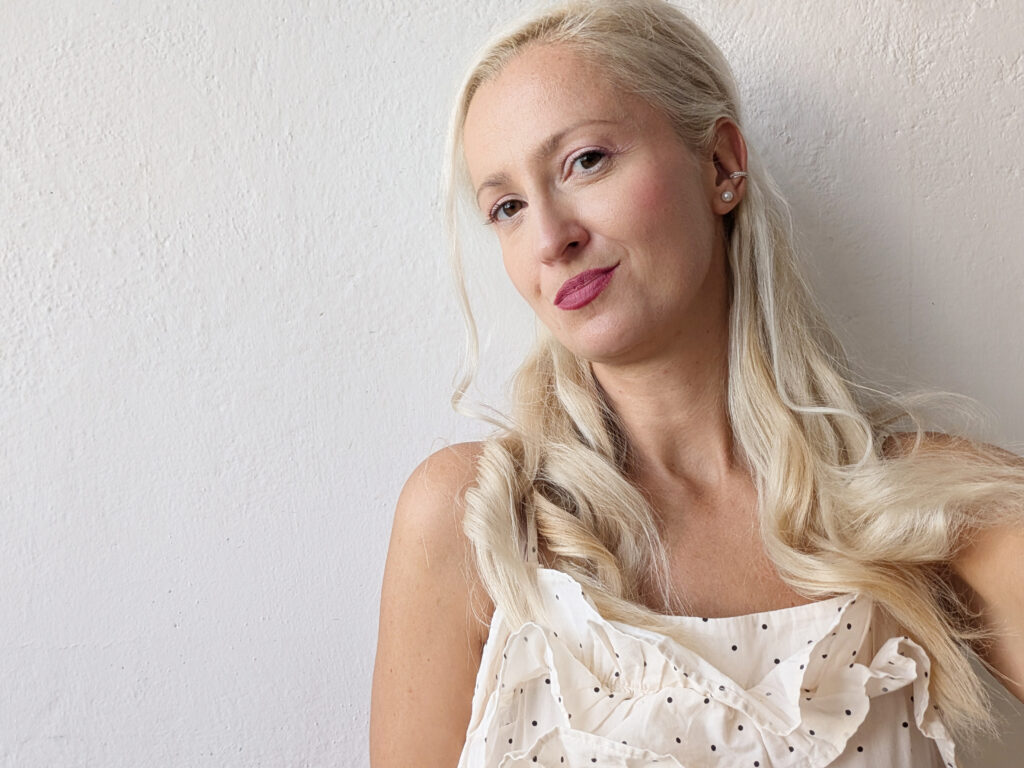About
Julie Machallova
Education
- University of Ostrava, Faculty of Fine Arts, Department of Painting, a painting studio of Prof. Daniel Balabán academic painter
- University of Ostrava, Faculty of Education, Art Education
- Art Highschool Ostrava, Department of Painting
Study Internship
- Escuela de Arte de Sevilla, Spain, Department of Mosaic, Mural techniques and Enamelled Jewelry
Il Mite
Voglio fare all’amore con te.
Hai cosi vaga l’anima.
Saffó
… she appears to be an ecstatic beauty among abandonment, nostalgia, and eroticism. The painting speaks of dreams and abandonment to reality, and of the body and life.
Roberto Mastroianni (Philosopher, Anthropologist, Ph.D., Art Critic and Curator, Torino, IT)
In my new series of paintings, I felt a profound need to turn inward, to reconnect with myself and portray the intimacy and fragility of love. Especially today, when lasting relationships are rare, love itself seems almost like a phenomenon.
These paintings explore beauty, love, desire, sensuality, female sexuality, and introspection.
Overall, my artistic practice engages with the beauty of the moment—silence, loneliness, solitude, frozen in time, and memories.
Painting carries narrative potential; it is deeply philosophical and psychological.
You deserve a lover who takes away the lies and brings you, hope, coffee and poetry.
Frida Kahlo
The environment plays an essential role in Julie’s paintings, the scenery in which the figure is set. For the most part, they are made up of monumental scenes that fill the background, and it does not matter whether they are urban or natural landscapes. They encode the feeling of being in humble relation to a transcending entity. Julie likes to stop time in paintings.
Certainly, for Julie Machallova’s painterly thinking, the common theme is one of uncompromising solitude. The visual action actor is burdened by our attention, voyeurically observed, grappling with something serious. But the severity is not demonstrated by a radical dynamic gesture; on the contrary, the figures are mostly calm and static. Julie likes to stop time in paintings.
texted by Jaroslav Michna (art critic and curator and curator Gallery of Fine Art Ostrava)
